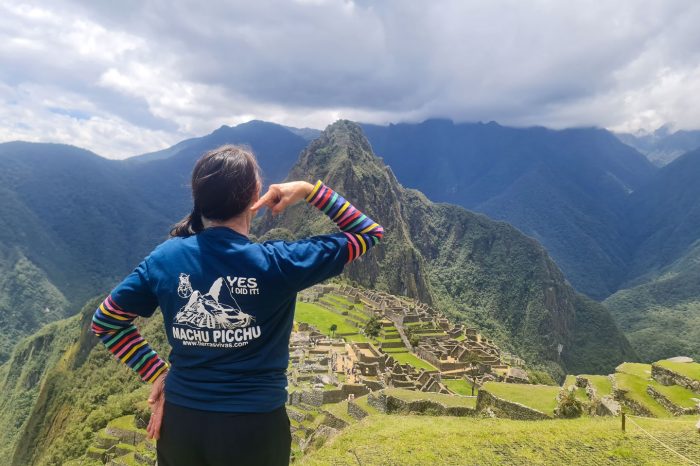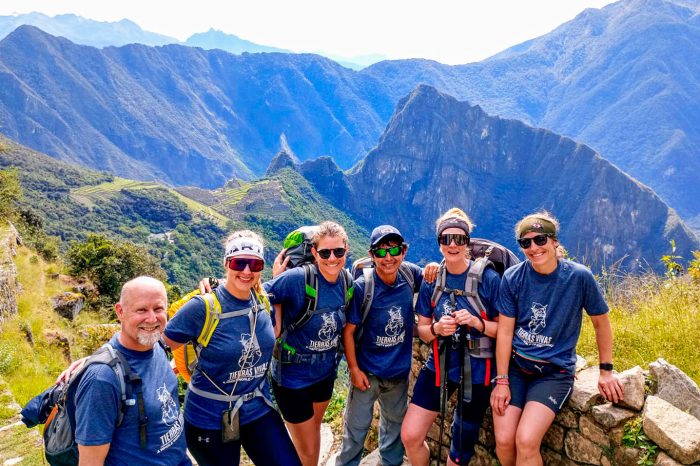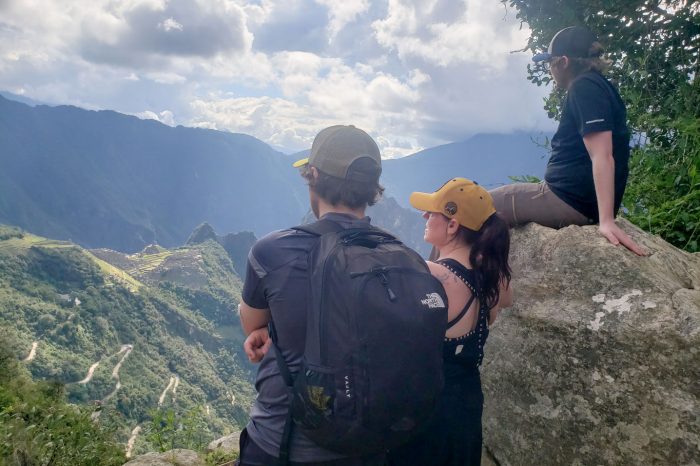Inca Trail Peru
Related Tours

2026 Inca Trail Trek 4 Days
The Inca Trail is the quintessential Machu Picchu trek, known worldwide as one of the most iconic trekking experiences. But what makes it so special? Discover hidden Inca archaeological sites, traverse landscapes in harmony with …

Short Inca Trail to Machu Picchu 2025
The Short Inca Trail offers the best quick experience for those seeking to hike to Machu Picchu. Prepare to be captivated by the allure of ancient ruins, breathtaking vistas, and the Inca citadel of Machu Picchu. The 2-day …

Trekking the Inca Trail 2025
Explore our ‘Trekking The Inca Trail‘ tour, a thrilling journey through Peru’s iconic destinations. Begin your adventure in Lima, soaking in the vibrant atmosphere of the Peruvian capital. From Lima, take a flight to Cusco, …
The Inca Trail is the most popular hiking route to Machu Picchu. The trek can last anywhere from two to six days, depending on the route. The most popular option is the 4-day Classic Inca Trail.
The Inca Trail to Machu Picchu is the most popular hike in Latin America and one of the world’s top trekking routes. Renowned as a challenging yet rewarding journey, it leads hikers through mountains, high passes, and breathtaking landscapes to the legendary Inca citadel “Machu Picchu“. Along the way, hikers can explore impressive Inca archaeological sites, walk through ancient tunnels, and follow original stone pathways built centuries ago. Much of the trail remains intact, lending an air of mystery to the experience.
Inca Trail Peru
The Inca Trail is located in the Cusco region of Peru, in the Urubamba province. The classic Inca Trail is a 27-mile trek that begins at kilometer 82 and ends at Machu Picchu. The Short Inca Trail is 15 km, and the Salkantay to Inca Trail is 68 km. The latter is considered the most beautiful because it passes the Sacred Mountain of Salkantay, Lake Humantay, and other stunning landscapes.
The Inca Trail is part of the Qhapaq Ñan, a vast road network built during the Inca Empire that connected the entire Tahuantinsuyo, or the Four Regions of the Inca state. Today, many well-preserved sections of the trail can be found across Peru, including in Puno, Ayacucho, Lima, Arequipa, Apurímac, and Huancavelica. However, most of these sections are not well known because they mainly connect small communities rather than tourist destinations.
The Qhapaq Ñan was used by the Inca population, the Sapa Inca (emperor), soldiers, and the Chasquis, who were the empire’s official messengers. The Chasquis ran tirelessly across the empire to deliver messages. According to Spanish chronicles, they were so fast and organized that they could deliver fresh fish from the coast of Lima to Cusco still alive for the Sapa Inca. The Incas built tambos, or rest houses, along the trail where the Chasquis could stop, relay messages to another runner, or rest. These tambos were also stocked with essential supplies, such as potatoes, corn, and clothing, for travelers and officials.
Local communities maintained the Inca Trail, or Qhapaq Ñan, through a system of collective labor. In the Inca Empire, work was based on three principles: Minka, Ayni, and Mita.
Minka was voluntary communal work for the benefit of society. Families brought their own tools and food and participated in building projects, such as irrigation canals, fortresses, agricultural terraces, and—importantly—the repair of Inca roads.
The term “ayni” referred to reciprocal labor, in which families or neighbors helped each other with agricultural or construction tasks.
Mita was mandatory public service for the state and was often used for large-scale projects.
The Inca Trail featured stone structures and earthworks, as well as stone or wooden beam bridges that crossed rivers. The Incas respected the natural environment, integrating their roads and buildings with the landscape in a way that honored Pachamama (Mother Earth). Many trails included small water channels that provided travelers with pure mountain water.
When the Spanish invaded, the Sapa Inca ordered parts of the trail network destroyed, particularly the sections connecting important cities, temples, and villages, in an attempt to protect them from the conquerors.
The Circuit 5 Machu Picchu ticket offers a comprehensive experience, including the entirety of Inca Trail Tours Route 1, 2, and 5. If you are embarking on the Inca Trail, your exploration of the Inca citadel will deviate from the standard tour. While the guided tour covers a portion of the citadel, upon reaching Machu Picchu, you’ll have the opportunity to capture the traditional photo from Casa del Guardian. Following this, you will descend to the lower part of the Inca citadel for an in-depth guided tour of Machu Picchu.
Share this tourTuboleto Machu Picchu
TuBoleto:
- About Us
- Contact Us
+51 997 434 941
Av Tupac Amaru PP-10B, Santiago, Cusco - Peru
Mon - Fri 8.00 - 18.00 Sat 8.00 - 12.00 Sunday CLOSEDTuBoleto Machu Picchu 2025/2026
Boleto Peru was established by the Inca Trail Machu agency to simplify the booking process for entrance fees to Machu Picchu and other important tourist circuits in Peru. We have been operating as sustainable tour specialists in Peru since 2007, specializing in trekking & hiking adventures and tailor-made trips.
